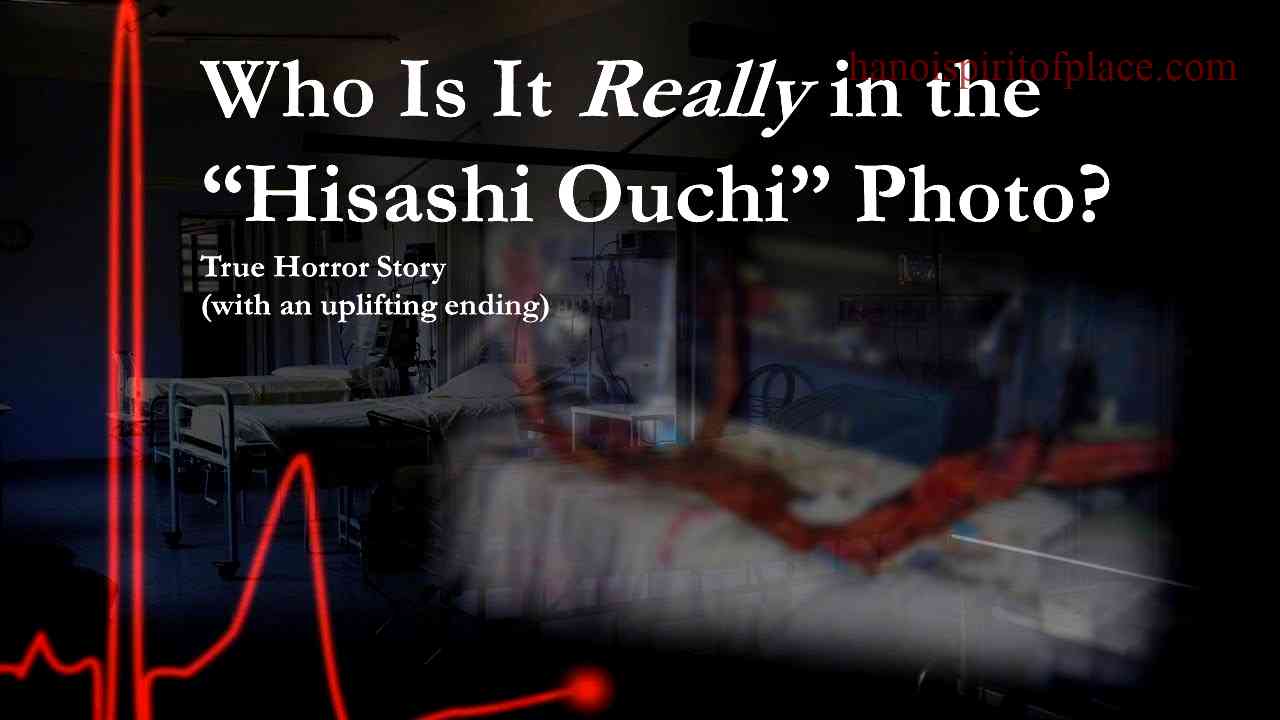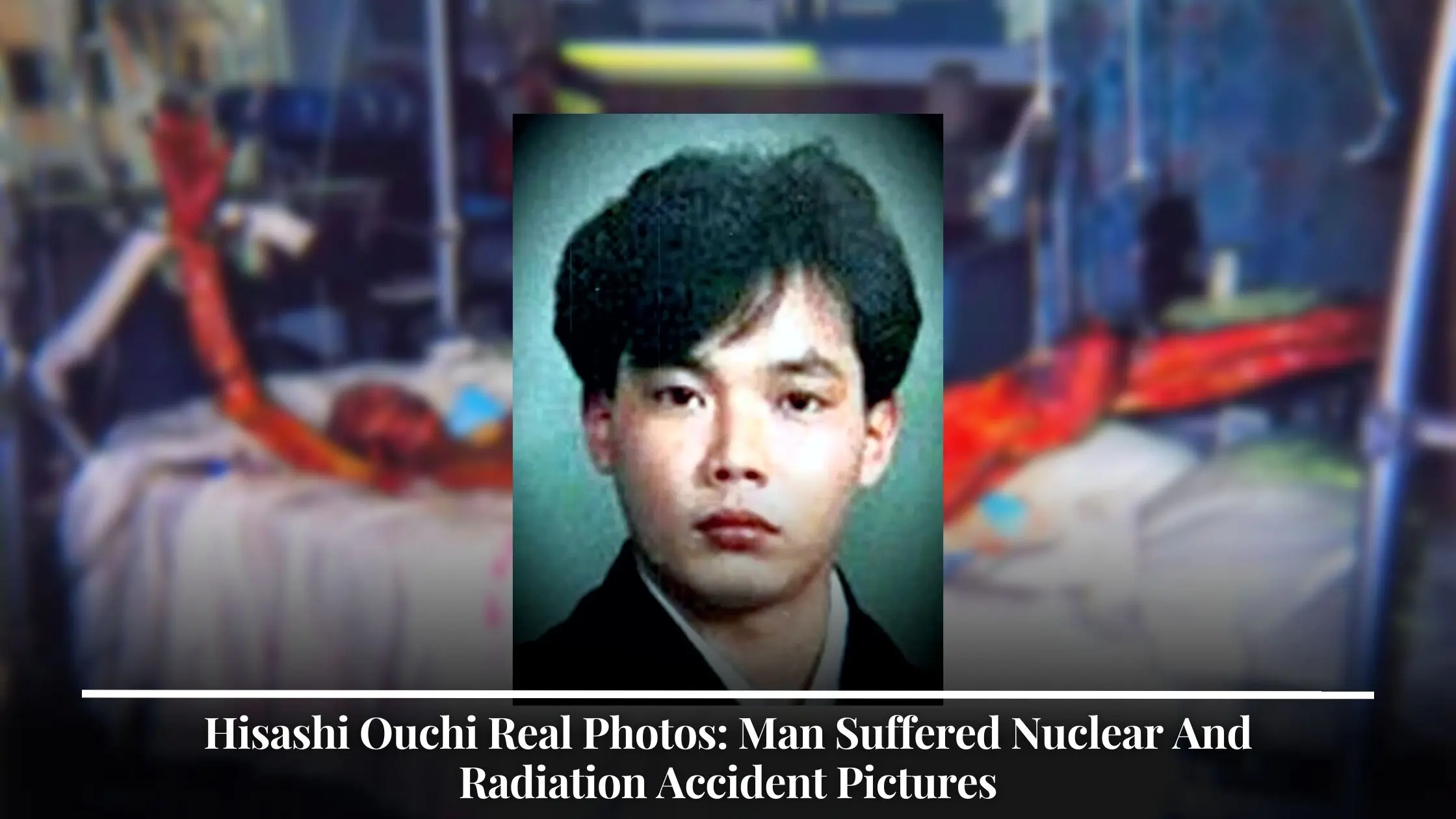Sometimes, a single image or a particular story can really stick with you, showing us something quite serious about what can happen in the world. When we talk about events involving nuclear materials, there are stories that, in a way, just stand out. One such account involves a person named Hisashi Ouchi, and the events around him at a nuclear facility in Japan. It's a topic that, you know, brings up a lot of deep thoughts about safety and human experience.
The details surrounding what happened to Hisashi Ouchi are, frankly, quite impactful, painting a picture of a very serious incident. It was at a nuclear power plant, a place where people handle powerful elements, that he, like, faced an unimaginable situation. The information we have about his experience, particularly the exposure to radiation, is something that, in fact, makes you pause and consider the immense forces at play in such environments. We’re talking about a moment in history that, you know, really highlighted the severe consequences of working with such intense energy.
The story of Hisashi Ouchi is, you know, one that many have come to know, especially those interested in nuclear safety or the effects of radiation on the human body. It’s a very stark reminder of the potential dangers, and it helps us understand the immense challenges faced by individuals in such circumstances. The very idea of the "hisashi ouchi photo" often brings to mind the gravity of the situation, even if one has not seen a particular image. It's about the memory of an event, and the human cost involved, which is, in some respects, truly profound.
Table of Contents
- Who Was Hisashi Ouchi?
- Personal Details and Bio Data
- What Happened at the Tokaimura Plant, Impacting Hisashi Ouchi Photo History?
- The Impact of Radiation Exposure
- How Long Did Hisashi Ouchi Live After the Incident, and the Hisashi Ouchi Photo Legacy?
- The Unprecedented Nature of His Injuries
- Remembering the Event and the Hisashi Ouchi Photo Context
- Lessons Learned from the Tokaimura Incident
Who Was Hisashi Ouchi?
Hisashi Ouchi was, in essence, a Japanese lab technician. His role involved working with nuclear materials, a job that, you know, comes with its own set of particular demands. He was a person whose everyday work placed him in a setting that required very careful handling of substances that hold immense energy. It was during his time as a worker at the Tokaimura nuclear power plant that he became involved in an event that would, in a way, make his name known across the globe, not for his life, but for the extreme circumstances he faced. He was, as a matter of fact, just doing his job when the incident occurred, which is a rather sobering thought.
Personal Details and Bio Data
When we talk about Hisashi Ouchi, the personal details available are, you know, fairly limited in public records, focusing mostly on the event that made him known. His life before the incident is not widely documented, which is, in some respects, typical for individuals who are not public figures. What we do know is tied to his profession and the very unfortunate event that took place. Here is what is generally known about him:
| Name | Hisashi Ouchi |
| Occupation | Lab Technician |
| Workplace | Tokaimura Nuclear Power Plant, Japan |
| Year of Incident | 1999 |
| Cause of Injury | Critical Radiation Exposure |
This simple table, you know, really highlights the core facts about him in relation to the incident. It shows us, basically, the essential information that is often brought up when his story is discussed. He was, in fact, a worker, a regular person, who found himself in a truly extraordinary and terrible situation, which is, you know, something to consider.
What Happened at the Tokaimura Plant, Impacting Hisashi Ouchi Photo History?
On September 30, 1999, something went very wrong at Japan's Tokaimura nuclear power plant. Hisashi Ouchi was working there, doing his part, when a very serious incident took place. It was, in fact, an accident involving nuclear fuel processing, where, in a way, too much uranium was mixed together at once. This created a chain reaction that released a huge burst of radiation. This kind of event, you know, is called a criticality accident, and it is, frankly, something that nuclear facilities work very hard to avoid. The unexpected release of such intense energy meant that anyone close by was in immediate danger, and Hisashi Ouchi was, unfortunately, right there. The sheer power of what happened that day is, you know, almost hard to grasp, and it had a profound effect on him.
The circumstances that led to the incident were, in some respects, a series of human errors, making the situation even more tragic. Workers were preparing nuclear fuel, and they, basically, poured a solution containing uranium into a tank that was not meant for that amount. This, in fact, caused the material to reach a critical state, leading to the burst of radiation. It was a very sudden and powerful event, like, a flash of energy that could not be seen but was incredibly damaging. The consequences of this momentary lapse in procedure were, as a matter of fact, immediate and severe for those exposed, including Hisashi Ouchi, whose experience would, you know, become a significant part of the story. The event, in a way, left a lasting mark on the history of nuclear safety, and the context of any "hisashi ouchi photo" is rooted in this particular moment.
The Impact of Radiation Exposure
Hisashi Ouchi received what is considered a fatal dose of radiation during the Tokaimura incident. To put it simply, the amount of radiation his body absorbed was, you know, incredibly high, far beyond what a human body can tolerate. This type of exposure, in fact, causes severe damage at a cellular level, disrupting the body's ability to repair itself and function properly. It attacks the very building blocks of life, leading to widespread system failure. His skin, for example, experienced what are known as the worst radiation burns in recorded history. These were not just surface burns; they were deep, affecting the tissues and organs beneath, which is, you know, a truly terrible thought.
The immediate and long-term effects of such a high dose of radiation are, as a matter of fact, devastating. It destroys the body's ability to create new blood cells, damages the immune system, and causes organs to fail. For Hisashi Ouchi, this meant a prolonged and very difficult struggle. His body, in a way, was fighting against an invisible enemy that had already done irreparable harm. The visible signs, like the burns, were just one part of the immense internal damage. It was a situation that, you know, showed the extreme fragility of the human body when faced with such an overwhelming force. The sheer scale of his injuries is, basically, something that is often discussed when the story of Hisashi Ouchi is shared.
How Long Did Hisashi Ouchi Live After the Incident, and the Hisashi Ouchi Photo Legacy?
After the incident on September 30, 1999, Hisashi Ouchi lived for 83 days. This period was, in fact, a very difficult and agonizing time for him. Despite the extreme damage his body had sustained, medical professionals made considerable efforts to keep him alive. They tried, in a way, every possible treatment to support his failing systems, but the sheer amount of radiation he absorbed made recovery impossible. His survival for that long, given the extent of his injuries, is, frankly, often seen as a testament to the dedication of the medical team, even though the outcome was, you know, inevitable. It was a prolonged battle against a force that had, basically, already taken hold of his body.
The decision to continue treatment for such an extended period, despite the clear prognosis, has been a subject of discussion and reflection. It raised, in some respects, questions about medical ethics and the limits of intervention when faced with truly catastrophic injuries. The focus was, in fact, on trying to understand the effects of such high-level radiation on a human body, which is, you know, a very grim kind of learning. His story, and the details surrounding his 83 days, became a significant case study for nuclear medicine and safety. The context around the "hisashi ouchi photo" often includes this very difficult period, highlighting the human aspect of such a severe accident. It was, arguably, a very painful time for everyone involved, and his passing marked the end of a very difficult struggle.
The Unprecedented Nature of His Injuries
Hisashi Ouchi's injuries were, in a way, truly unprecedented. The radiation burns he suffered were, as a matter of fact, the worst ever recorded in history. This means that no other person had experienced such extreme damage from radiation and lived for any period of time afterwards. The sheer scale of the harm to his body, from his skin to his internal organs, was beyond anything medical science had encountered before in a living patient. It was, you know, a very unique and terrible case, presenting doctors with challenges they had never faced. His situation pushed the boundaries of medical knowledge and care, forcing professionals to confront the most extreme consequences of nuclear exposure. The visible effects of the radiation were, basically, a very stark reminder of the invisible power of such energy, and the impact it can have on human life.
Remembering the Event and the Hisashi Ouchi Photo Context
The Tokaimura incident and the story of Hisashi Ouchi serve as a very powerful reminder of the dangers associated with nuclear materials. It's a story that, you know, has been shared widely to highlight the need for strict safety measures and protocols in nuclear facilities. The memory of what happened that day, and the suffering Hisashi Ouchi endured, is, in fact, a very somber lesson. It helps people understand the very real and severe consequences when things go wrong in such environments. The "hisashi ouchi photo" often refers to the visual documentation of his condition, which, while difficult to view, served to educate and warn others about the destructive power of radiation. It's a way, in some respects, of keeping the memory of the event alive, so that future generations can learn from it and, hopefully, prevent similar tragedies. It was, arguably, a very dark chapter, but one that provided important, if painful, insights.
The images and accounts related to Hisashi Ouchi's condition are, frankly, very difficult to process, showing the profound impact of the radiation. They are not, in a way, meant for casual viewing but rather for serious reflection on the human cost of such accidents. These visual records, you know, contribute to the historical understanding of nuclear safety and the effects of radiation on the body. They serve as a stark educational tool, helping to convey the gravity of the situation in a way that words alone sometimes cannot. The context of any "hisashi ouchi photo" is, basically, one of deep seriousness and a call for greater care in handling nuclear substances. It’s a very somber part of history that, you know, continues to resonate.
Lessons Learned from the Tokaimura Incident
The incident at Tokaimura, and particularly the case of Hisashi Ouchi, led to many important lessons being learned within the nuclear industry. It highlighted, in a way, the critical importance of adhering to strict safety procedures and the dangers of shortcuts. The event showed that even seemingly small deviations from established protocols can have, frankly, catastrophic consequences. It prompted a very thorough review of safety regulations and training practices, not just in Japan but around the globe. The focus became, you know, even more on ensuring that every step in handling nuclear materials is followed with the utmost care and precision. It was, as a matter of fact, a very costly lesson, but one that has, hopefully, made nuclear operations safer in the long run. The suffering of Hisashi Ouchi, in a very real sense, contributed to a greater awareness of these vital safety needs.
The medical community also gained, in some respects, a deeper, if painful, understanding of the effects of extreme radiation exposure on the human body. The case provided, you know, very specific data on how the body deteriorates under such conditions and the challenges of providing care. It underscored the need for specialized medical responses in the event of nuclear accidents. The legacy of Hisashi Ouchi's experience is, basically, a sobering reminder that while nuclear energy offers many benefits, it also demands an incredibly high level of respect and caution. It’s a very powerful lesson that, you know, continues to shape safety protocols today.
This article has explored the story of Hisashi Ouchi, a Japanese lab technician who suffered extreme radiation exposure at the Tokaimura nuclear power plant in 1999. We looked at the nature of the accident, the unprecedented severity of his injuries, and the 83 days he lived following the incident. The discussion touched upon the medical efforts made and the lasting impact of his case on nuclear safety protocols and medical understanding.



Detail Author:
- Name : Amaya Donnelly
- Username : dblanda
- Email : charlotte84@grimes.info
- Birthdate : 2001-08-16
- Address : 495 Bernhard Roads Apt. 341 East Jaylen, NY 71152-9110
- Phone : +16235269666
- Company : Yundt, Runte and Ondricka
- Job : Receptionist and Information Clerk
- Bio : Sint quis cumque voluptas voluptatem. Qui velit voluptatem sequi aut sit commodi esse. Qui laudantium magni aspernatur.
Socials
tiktok:
- url : https://tiktok.com/@schamberger1993
- username : schamberger1993
- bio : Explicabo vel eius quis porro est non.
- followers : 3090
- following : 647
facebook:
- url : https://facebook.com/schambergers
- username : schambergers
- bio : Laborum aut hic odio ut hic odit dolores.
- followers : 6779
- following : 2593
twitter:
- url : https://twitter.com/sschamberger
- username : sschamberger
- bio : Similique eum voluptatem voluptates rerum. Distinctio labore vitae non aliquam error nulla. Rem nihil ut quibusdam neque.
- followers : 579
- following : 914
instagram:
- url : https://instagram.com/stone.schamberger
- username : stone.schamberger
- bio : Iste porro explicabo consequuntur omnis ut veniam et. Perspiciatis nisi ut eum eaque.
- followers : 2639
- following : 2258

